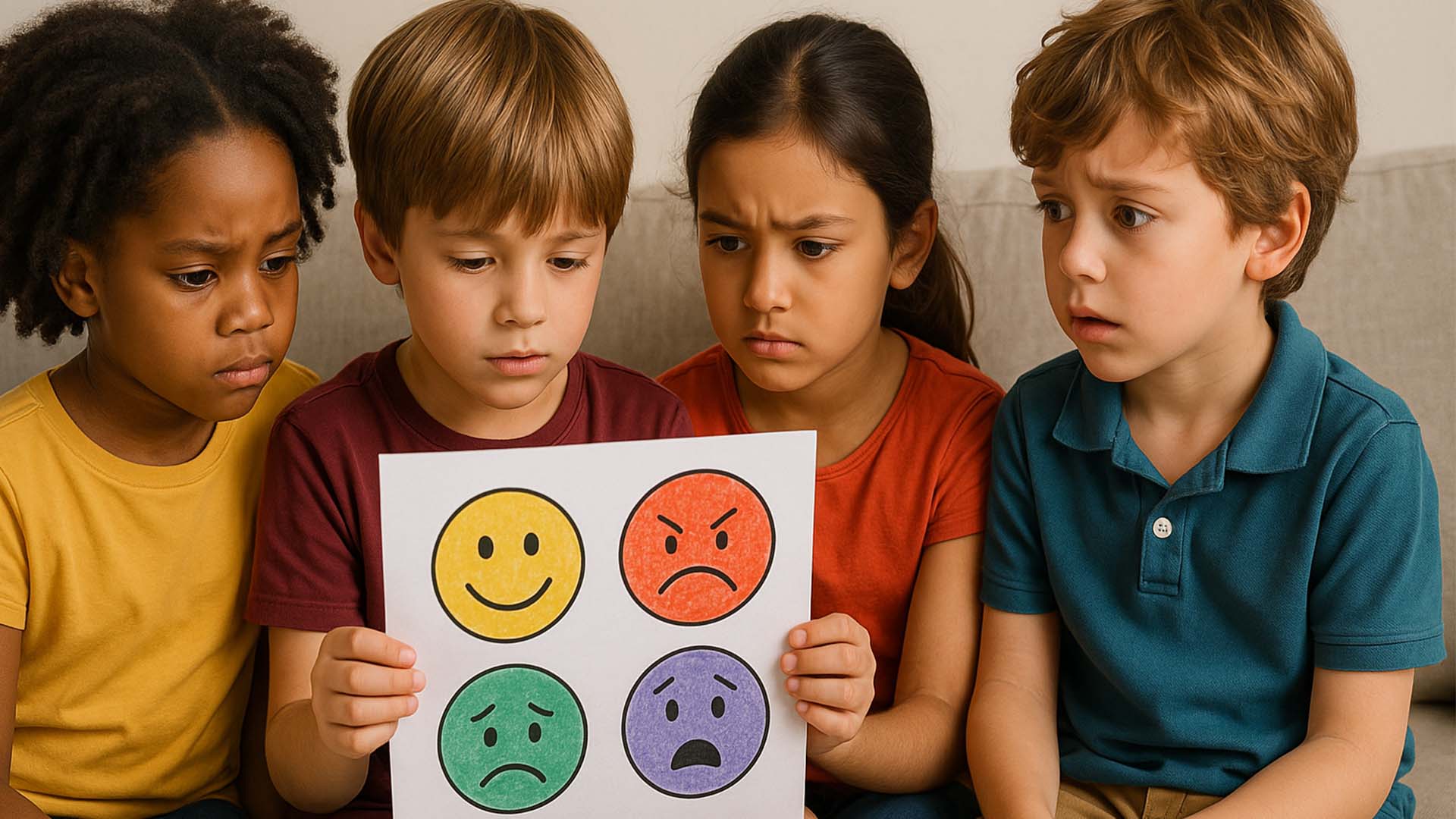Emotions are a fundamental part of the human experience, yet for children, understanding and managing these powerful feelings can be a complex journey. From joy and excitement to sadness and frustration, kids experience a wide range of emotions, often without the vocabulary or tools to express them effectively.
Helping children develop emotional literacy is crucial for their social development, mental well-being, and ability to navigate the world around them. This article provides a guide for parents and caregivers on how to help children understand, express, and manage their emotions in a healthy way.
Navigating the World of Feelings
Recognizing and Naming Emotions
The first step in emotional understanding is learning to recognize and name different feelings. For young children, this can be as simple as pointing to pictures of faces showing various emotions and asking, “How do you think this person feels?” [1]. As they grow, encourage them to use emotion words to describe their own feelings. For example, instead of just saying “I’m mad,” help them identify if they feel “frustrated,” “annoyed,” or “angry.” This expanded vocabulary empowers them to communicate their internal experiences more precisely.
Expressing Emotions Healthily
Once children can identify their emotions, the next step is to teach them healthy ways to express those feelings. It’s important to emphasize that all emotions are okay, but not all behaviors are. For instance, it’s okay to feel angry, but it’s not okay to hit. Encourage children to talk about their feelings, draw pictures, or engage in physical activities like running or jumping to release energy [2]. Role-playing different scenarios can also help them practice appropriate responses.
Developing Empathy and Understanding Others
Understanding one’s own emotions is closely linked to developing empathy for others. When children can recognize their own feelings, they are better equipped to understand and respond to the emotions of their peers. Discuss characters’ feelings in books or movies, or talk about real-life situations: “How do you think your friend felt when you shared your toy?” This helps them connect their actions to others’ emotional responses and build stronger relationships [3].
Coping Strategies for Big Emotions
Children, like adults, need strategies to cope with intense emotions. Teach them simple calming techniques such as deep breathing exercises, counting to ten, or taking a short break [4]. Create a
quiet corner or a ‘calm-down kit’ with comforting items. The goal is to help them self-regulate and return to a state of calm so they can think clearly and find solutions.
Q&A: Helping Kids with Emotions
Q1: My child has tantrums. How can I help them manage their anger?
A1: Tantrums are normal, especially for younger children. During a tantrum, focus on keeping your child and others safe. Once they calm down, talk about what happened, validate their feelings, and discuss alternative ways to express anger, like using words or taking deep breaths.
Q2: How can I teach my child about empathy?
A2: Encourage perspective-taking by asking questions like, “How do you think [character/person] feels?” Read books that explore different emotions and discuss them. Model empathetic behavior in your own interactions with others.
Q3: When should I seek professional help for my child’s emotional challenges?
A3: If your child’s emotional outbursts are frequent, intense, or interfere with their daily life (school, friendships), or if you notice persistent sadness, anxiety, or withdrawal, it’s a good idea to consult with a pediatrician or child psychologist. They can provide guidance and support.
Sources
- [1] “Helping Kids Notice How They Are Feeling.” Kids Mental Health Foundation, https://kidsmentalhealthfoundation.org/mental-health-resources/behaviors-and-emotions/noticing-emotions
- [2] “Understanding emotions: children & teens.” Raising Children Network, https://raisingchildren.net.au/preschoolers/development/preschoolers-social-emotional-development/understanding-managing-emotions-children-teenagers
- [3] “How to help kids understand and manage their emotions.” American Psychological Association, https://www.apa.org/topics/parenting/emotion-regulation
- [4] “How Can We Help Kids With Emotional Self-Regulation?” Child Mind Institute, https://childmind.org/article/can-help-kids-self-regulation/








0 Comments